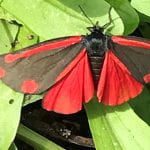Surviving the heat and drought on the wildlife plot
Not everything on the wildlife plot has survived the heat and drought with no watering but some things have done well and so I thought I would list them as we are all going to need more of this type of plant.
First of all is the Nepetas that were planted two years ago. I chose Nepeta racemosa which is a taller Nepeta identified on the rosybee website as being one of the best for bees. Rosybee undertook six years of research to see which of the plants bees landed on the most, so for instance out of 4 types of Nepeta the racemosa variety was the one that the bees went to the most, bumble bees in particular. But this has also proved to be a popular plant for others as well. We have had Mint moths on it and earlier this month a Hummingbird hawk moth (not easy to capture on camera), both of which are day-flying moths.
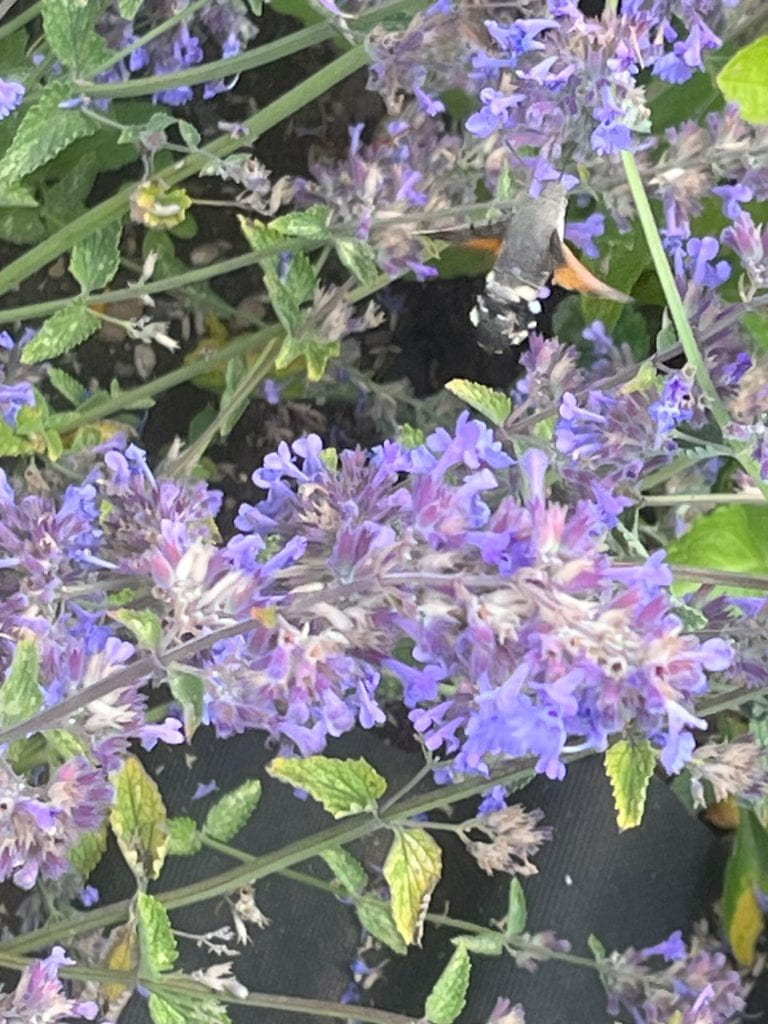
First off, the Hummingbird hawk moth. You just can’t capture these with a still image because they are never still so here is a very short film if you can’t see the one above. Play it back at half speed by clicking on the cog at the bottom of the film screen and then playback speed. At half speed you can see the moth in a bit more detail.
Nepeta is a plant used by a lot of wildlife and has flowered well and for a reasonable length of time in the heat. The plant has flopped with the temperatures but that isn’t a problem. You can also get a sense of the plant from the video too.
This picture is the best image of the moth I could get with my phone but it also shows the plant with its small flowers which give an overall blur of blue.
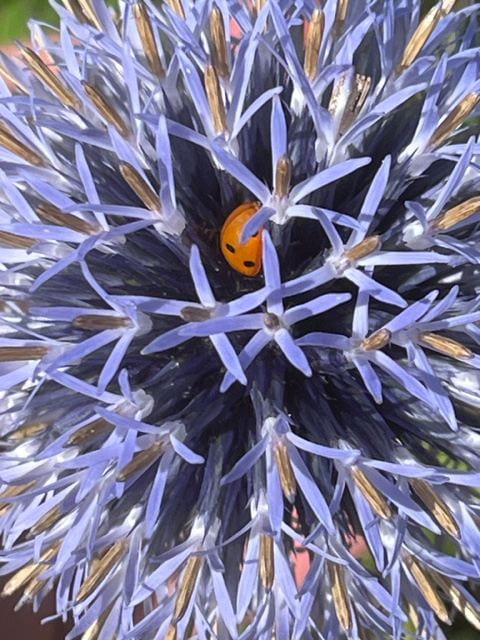
Next off is the Echinops ritro – a steely blue globe on top of a stick. Usually covered in bees of all types but this one had a snoozing ladybird probably escaping the heat inside it. These are very tolerant plants and I suspect that this one is Blue Globe. They spread slowly and divide very easily. This one is a division moved in the spring of 2022 and has taken well with no watering apart from when it was transplanted.
The plant is a native of southern Europe and western Asia, both quite warm, dry places inland and is a type of thistle.
I think it is flowering slightly earlier this year than usual – it’s usually more of an August flower.
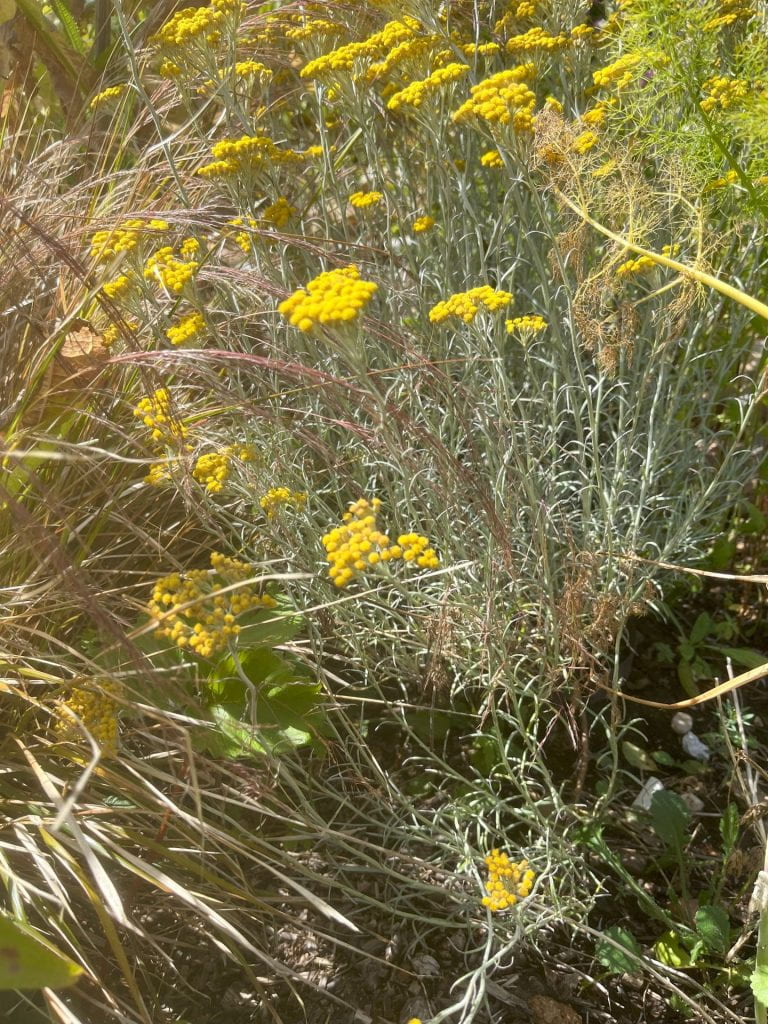
This is what I know as a curry plant because if you crush the leaves they smell like curry, perhaps. It’s not a smell that everyone loves but it has narrow grey leaves which tells us that it is good in heat and drought and has small yellow bobble flowers. Its official name is Helichrysum italicum and has been flowering for at least a fortnight now and looks set to continue for a while.
And finally, a bit of a marmite plant, that is not one that you would place in your garden but one that might put itself there.
Ragwort.
I know it has a bad name, is poisonous for horses etc, etc but the fact is that horses will only eat it if they are in an over-grazed field and there is nothing else to eat. It is a plant that supports about 30 insects many of which only live on ragwort and is an important source of nectar and pollen. And guess what?
It is very, very drought tolerant!
Here it is in all its glory.
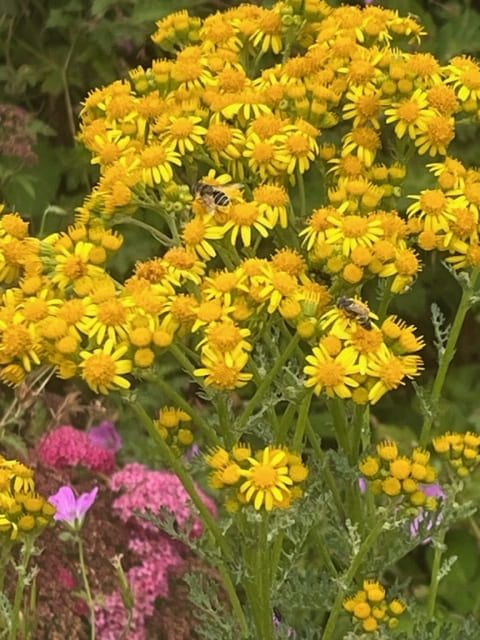
And finally, just because I am focusing on moths this year, here is a wonderful video of moths flying.
.
